Apple patents system that reads iMessages in a sender’s voice
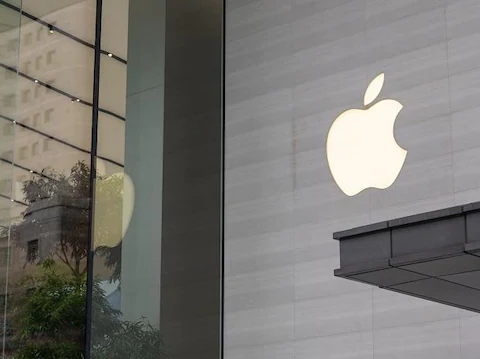
Introduction
Apple patents system on a new technology that could change the way we interact with iMessage. The invention will enable users to hear their messages read out loud in the sender’s voice. This can make sending messages more personal and immersive.
In addition, The technology could be used to create a messaging app that does this. For example, you could send someone a text and he/she could read the message back to you, and vice versa. The application is called “Message Transcription.” It may seem like a simple idea. But, Apple may have thought of some interesting applications for this technology. For example, it could be used to provide information to deaf people.
Moreover, It could be used to create games. It could even be used to replace teleconferencing. The application could also be used to provide personalized messages to people who are sick and need someone to talk to.

Are you in Hurry?
A new patent application by Apple that describes a technology that allows iMessages to be read out loud in the sender’s voice. This patent application reveals Apple’s efforts to enhance user experience with voice recognition technology.
Additionally, The proposed technology will enable iMessages to be read aloud in the sender’s voice, providing a more personalized experience for the recipient. The feature will use the sender’s voice recordings to replicate their speech patterns, tone, and inflection, making the message sound like it was spoken by the sender.
Further, The patent application suggests that this feature will work on both iPhones and iPads and will utilize machine learning algorithms to analyze the sender’s speech and replicate it accurately. The sender’s voice will also be saved in a database to ensure that the message is always read out in the correct voice.
Moreover, This new technology could be a significant improvement for users who are visually impaired or those who prefer to listen to messages instead of reading them. The patent application highlights Apple’s focus on innovation and user experience, and it will be interesting to see how this technology develops in the future.
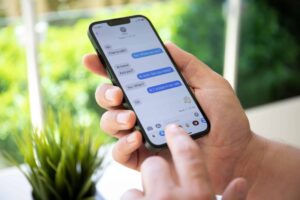
What is the Apple Patent About?
In the Apple patent filing, the inventors describe how the text-to-speech system can be used to make the sender’s voice audible during the reading of a message. The process of converting text into spoken words is called speech-to-text. Text-to-speech allows a computer to speak out the words that are typed by a user.
In simple terms, the process converts text written by a person into audio. You can read news articles, books, emails, and other content to your mobile phone using text-to-speech. Many people use their smartphones for voice communications. The iPhone has a built-in text-to-speech software feature that works great.
However, iMessage is a messaging application that has been available for the iOS platform since 2011. Messages are sent between users using the app. Messages can include photos, videos, links, and many other things.
Further, The problem with this is that there is no way to control the sender’s voice when a message is read aloud. With iMessage, you will only hear the message read in the default voice. So if the sender doesn’t like their voice, they cannot change it.
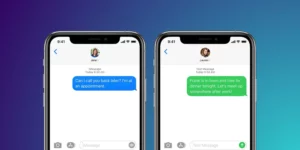
What are the Benefits of this Technology?
There are several benefits to this technology. For one, it adds a more personal touch to messaging. By hearing the sender’s voice, the message feels more authentic and human. It also makes it easier to understand the message’s tone and intent.
Additionally, This technology could also help those with disabilities, making it easier for them to use iMessage. For example, someone with a visual impairment could use this feature to have their messages read out loud, rather than having to read them on a screen.
Further, There are many benefits of iMessage, but the main benefit is that it is a secure messaging application. With iMessage, you can send pictures, videos, and other files. It is also easier to use this technology than sending text messages. Instead of typing on a phone’s keyboard, you just hold the phone up to your ear.
Moreover, The downside to iMessage is that it doesn’t support group messages. You can’t send photos to multiple recipients at once, and you can’t send large files. The reason for this is that Apple only has enough space to store this information on the user’s device.

How Does the Patent Work?
The patent application by Apple says that the system works by analyzing the sender’s voice using machine learning algorithms. This analysis creates a digital voice model that captures the sender’s speech patterns, tone, and inflections.
Further, When the message is received, the system applies the digital voice model to the message, converting the text into speech that sounds like the sender. This creates a more immersive and personal messaging experience, making iMessage more engaging than ever before.
Moreover, iMessage uses a neural network to generate a digital voice model of the sender’s voice that can be used to convert messages into speech that sounds like the sender. Once it has analyzed the sender’s message, the system generates a synthetic voice model that captures the sender’s unique voice pattern and tone.
Importantly, The system then uses this synthetic voice model to transform the original message into a personalized and conversational message that sounds just like the sender. This process creates an interactive experience that is much more natural and immersive than the traditional method of messaging.
For example, the system might transform the text “I love you” into a personalized message that sounds like the sender. The system also uses this digital voice model to perform actions and make decisions.
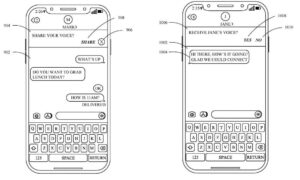
Possible Use Cases for the Patent
There are several ways that this technology could be used. It could be used to help create more engaging voice assistants, such as Siri. These assistants could imitate the voice of the user. They could also be used to deliver information to people, instead of delivering it through text.
For example, teachers could use this technology to help their students better learn about the material. This would help them to understand the content better. Students could use these assistants to receive information from their teachers. They could ask questions and even play games. This could help the teacher to provide better lessons to students.
However, Another way to use this technology is to read texts aloud. It could help students to better understand the material by reading it aloud in the voice of the teacher. This could help students to better comprehend the lesson.
Additionally, Another possible use for this technology is to allow blind people to read books. These people usually use a screen reader. The screen reader would convert the printed book into sound files. Then, someone would listen to the books through a headset. This could help blind people to read books in a natural way. It could also help them to better comprehend the text.
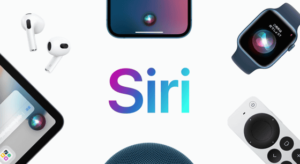
Conclusion
Apple has filed a patent that will allow the receiver of a message to hear the message in the sender’s voice. For instance, if someone sent a message using Siri, the recipient will be able to listen to the message read out loud by the voice of the sender.
Moreover, This technology could revolutionize how people use iMessage and make messaging more immersive and personal. With this technology, users can hear messages read out in the sender’s voice, creating a more authentic and engaging messaging experience.
Importantly, The possible use cases for this technology are numerous, and it has the potential to change the way we interact with digital content. Apple is always looking for ways to innovate and improve the user experience, and this patent is just one example of that commitment to innovation. We are excited to see what the future holds for this technology and how it will continue to enhance our digital lives.



